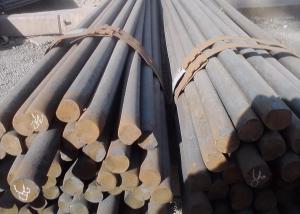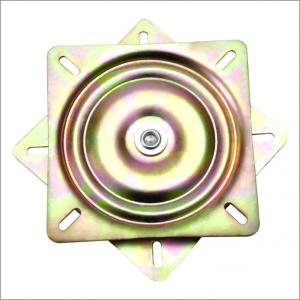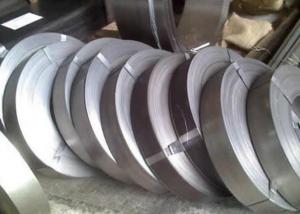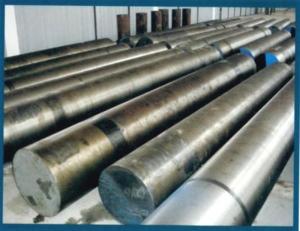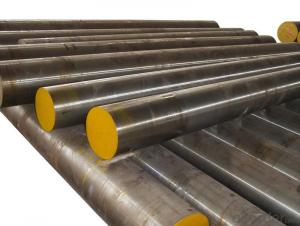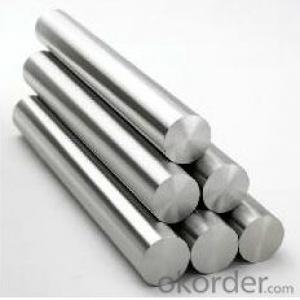SWRH42A 42B 57A Galvanized Steel Wire Rod
- Loading Port:
- Tianjin
- Payment Terms:
- TT OR LC
- Min Order Qty:
- 10 m.t.
- Supply Capability:
- 10000 m.t./month
OKorder Service Pledge
OKorder Financial Service
You Might Also Like
Item specifice
SWRH42A 42B 57A Galvanized Steel Wire Rod
Details of the SWRH42A 42B 57A Galvanized Steel Wire Rod
| Steel Grade | Q195-Q235,Q235,SAE 1008-1018 Hot Rolled Steel Wire Rod |
| Diameter | 5.5, 6.5, 7,8, 9,10, 12,14mm.etc. |
| Coil weight | 2m.t. |
| Application | drawing, construction materials, machinery parts,construction for Houses, Bridges, Roads,Packing |
| Deliver Time | 25-30 days after receipt of L/C or deposit by T/T |
| Packing | In coils, loading in container or by bulk vessel |
| Payment terms | 1).100% irrevocable L/C at sight. |
| 2).30% T/T prepaid and the balance against the copy of B/L. | |
| 3).30% T/T prepaid and the balance against L/C |
| Chemical Composition(%) | ||||||
| C | Mn | Si | S | P | Cr | |
| SAE1006B | 0.03~O.07 | ≤0.32 | ≤0.30 | ≤0.045 | ≤0.040 | 0.3-0.35 |
| Mechanical properties | ||||||
| Yield strength(N/mm2) | Tensile strength(N/mm2) | Elongation(%) | ||||
| 250-280 | 350-380 | ≥32 | ||||
| Grade | Chemical Composition(%) | |||||
| C | Mn | Si | S | P | Cr | |
| SAE1008B | 0.10max | 0.3~O.50 | 0.15max | 0.050max | 0.040 max | 0.3-0.35 |
| Mechanical properties | ||||||
| Yield strength(N/mm2) | Tensile strength(N/mm2) | Elongation(%) | ||||
| ≥195 | 315-430 | ≥30 | ||||
Supplier of the SWRH42A 42B 57A Galvanized Steel Wire
CNBM International Corporation is the most import and export platform of CNBM group(China National Building Material Group Corporation) ,which is a state-owned enterprise, ranked in 270th of Fortune Global 500 in 2015.
With its advantages, CNBM International are mainly concentrate on Cement, Glass, Iron and Steel, Ceramics industries and devotes herself for supplying high quality series of refractories as well as technical consultancies and logistics solution.
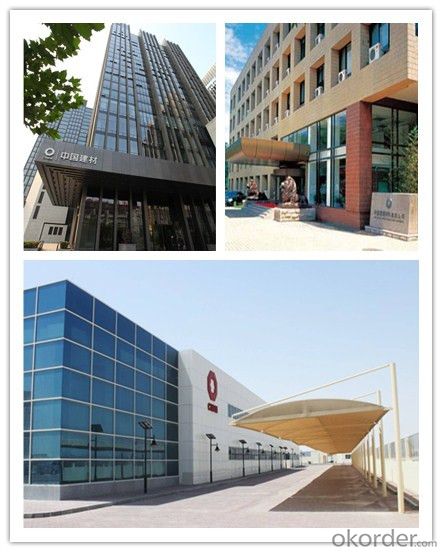
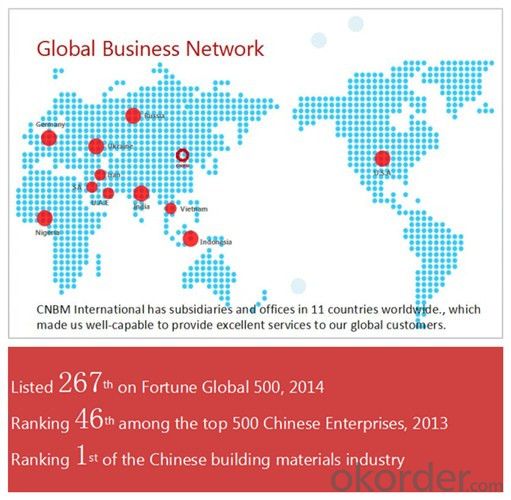
Delivery of the SWRH42A 42B 57A Galvanized Steel Wire Rod
Packaging Detail | Sea worthy packing /as per customer's packing instruction |
Delivery Detail | 15 ~ 40 days after receiving the deposit |
Products Show
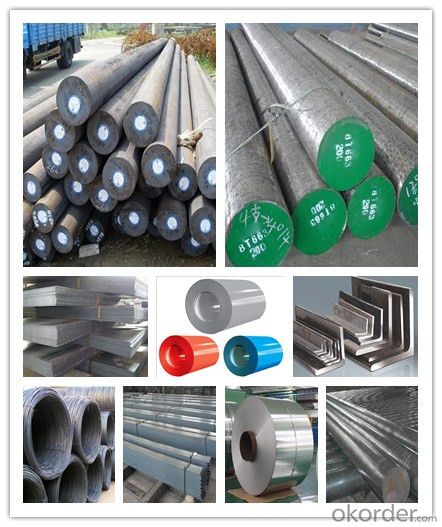
FAQ:
Are you a trading company or manufacturer? | Manufacturer |
What’s the MOQ? | 3 metric ton |
What’s your delivery time? | 15-35 days after downpayment received |
Do you Accept OEM service? | Yes |
what’s your delivery terms? | FOB/CFR/CIF |
What's the Payment Terms? | 30% as deposit,70% before shipment by T/T |
Western Union acceptable for small amount. | |
L/C acceptable for large amount. | |
Scrow ,Paybal,Alipay are also ok | |
Why choose us? | Chose happens because of quality, then price, We can give you both. Additionally, we can also offer professional products inquiry, products knowledge train (for agents), smooth goods delivery, excellent customer solution proposals. |
What's your available port of Shipment? | Main Port, China |
What’s your featured services? | Our service formula: good quality+ good price+ good service=customer's trust
|
Where are your Market? | Covering more than 160 countries in the world |
- Q:What are the properties of creep-resistant steel?
- Creep-resistant steel possesses several key properties that make it suitable for high-temperature applications. These properties include high strength, excellent resistance to deformation under constant stress at elevated temperatures, good resistance to oxidation and corrosion, and the ability to retain its mechanical properties over extended periods of time.
- Q:How does special steel perform in high-temperature creep resistance?
- The outstanding performance of special steel in resisting high-temperature creep is well-known. Creep refers to the tendency of a material to deform or strain under constant stress when it is subjected to elevated temperatures. Ordinary steels may experience notable creep under such conditions, which can result in a decrease in their mechanical properties and potential failure. However, special steels are specifically engineered to endure high-temperature creep, making them extremely suitable for applications where resistance to time-dependent deformation is crucial. These steels are frequently alloyed with elements like chromium, molybdenum, and vanadium, which enhance their properties at high temperatures. The alloying elements present in special steels create stable carbides and nitrides, which serve as strengthening agents. They hinder grain growth and prevent dislocation movement, thereby leading to improved creep resistance and structural stability even in extremely high temperatures. Moreover, special steels often undergo heat treatment processes like quenching and tempering, which further enhance their resistance to creep and overall mechanical performance. Additionally, the microstructure of special steels is meticulously controlled during the manufacturing process to ensure optimal resistance to creep. Typically, fine-grained structures with a high concentration of precipitates or second-phase particles are developed. These structures impede dislocation movement and enhance creep strength. To summarize, special steels possess exceptional resistance to high-temperature creep due to their alloying elements, heat treatment processes, and controlled microstructures. They can withstand prolonged exposure to elevated temperatures without significant deformation or loss of mechanical properties, making them indispensable in industries such as aerospace, power generation, and petrochemicals where high-temperature applications are prevalent.
- Q:How does special steel contribute to the renewable energy storage?
- Special steel plays a significant role in renewable energy storage by providing essential components for various energy storage technologies. For instance, it is used in the manufacturing of high-capacity batteries, such as lithium-ion batteries, which are crucial for storing energy from renewable sources like solar and wind. Additionally, special steel is used in the construction of wind turbine towers and solar panel frameworks, ensuring their durability and reliability. Overall, special steel contributes to the efficient and reliable storage of renewable energy, supporting the growth and sustainability of the renewable energy sector.
- Q:How does special steel contribute to the energy industry?
- Special steel contributes to the energy industry in various ways. It is widely used in the manufacturing of turbines, generators, and other critical components for power plants. Its high strength, durability, and corrosion resistance properties make it suitable for withstanding the extreme conditions found in power generation facilities. Additionally, special steel plays a crucial role in the production of pipelines and storage tanks for the oil and gas sector, ensuring the safe and efficient transportation and storage of energy resources. Overall, special steel enhances the reliability and efficiency of energy infrastructure, supporting the growth and sustainability of the energy industry.
- Q:How is special steel used in the production of bearings for high-speed applications?
- Due to its unique properties, special steel is widely utilized in the manufacturing of bearings for high-speed applications. These bearings play a critical role in facilitating efficient movement between surfaces and must withstand extreme forces and rotational speeds. To meet these demanding requirements, special steel is selected for its remarkable strength, durability, and resistance to wear. The composition of special steel enables it to maintain its structural integrity under heavy loads, preventing deformation and ensuring the longevity of the bearing. Moreover, special steel possesses exceptional hardness and toughness, making it resistant to wear and fatigue caused by repetitive high-speed rotations. This characteristic is particularly important in high-speed applications where continuous motion generates significant heat and friction, leading to premature wear and failure of the bearing. By utilizing special steel, these issues are minimized, guaranteeing reliable and efficient performance. Additionally, special steel exhibits superior heat resistance, which is crucial in high-speed applications where temperatures can escalate due to friction and high rotational speeds. The ability of special steel to withstand elevated temperatures without compromising its mechanical properties or deforming is vital for preventing premature bearing failure and ensuring long-term performance. In conclusion, special steel is an indispensable material in the production of bearings for high-speed applications. Its exceptional strength, durability, wear resistance, and heat resistance enable bearings to operate reliably and efficiently under extreme conditions, ensuring smooth movement and reducing the risk of premature failure.
- Q:How does special steel contribute to the manufacturing of defense equipment?
- Special steel plays a crucial role in the manufacturing of defense equipment due to its unique properties and characteristics. Firstly, special steel is known for its exceptional strength and durability, making it ideal for constructing various components of defense equipment. This high strength allows for the production of lightweight yet robust structures, enabling the development of advanced weaponry and protective gear. Moreover, special steel possesses excellent resistance to corrosion and wear, making it resistant to the harsh conditions faced by defense equipment in various environments. This resistance to corrosion ensures that the equipment remains functional and reliable even in extreme conditions, such as exposure to saltwater or acidic environments. Additionally, special steel offers exceptional heat resistance, which is crucial for defense equipment such as missile casings or jet engine components. Its ability to withstand high temperatures without losing its integrity or mechanical properties allows for the creation of more efficient and powerful defense systems. Furthermore, special steel can be tailored to meet specific requirements, enabling the manufacturing of customized defense equipment. It can be alloyed with various elements to enhance specific characteristics, such as increased hardness, improved magnetic properties, or better resistance to impact. This versatility allows for the production of defense equipment that meets the exact needs of military applications, enhancing their overall performance. In summary, special steel contributes significantly to the manufacturing of defense equipment by providing exceptional strength, resistance to corrosion and wear, heat resistance, and customization options. These properties enable the creation of more advanced, reliable, and efficient defense systems that meet the demanding requirements of modern military operations.
- Q:How is high-temperature alloy steel used in the production of heat exchangers?
- High-temperature alloy steel is commonly used in the production of heat exchangers due to its exceptional corrosion resistance, high strength, and ability to withstand extreme temperatures. It helps in maximizing the efficiency of heat transfer by maintaining structural integrity and preventing any degradation caused by the harsh operating conditions.
- Q:How is electrical resistance steel used in heating elements?
- Electrical resistance steel is commonly used in heating elements due to its high resistivity and ability to withstand high temperatures. When an electric current passes through the steel, its resistance generates heat, allowing the heating element to efficiently convert electrical energy into heat energy. This makes it suitable for applications such as electric stoves, water heaters, and industrial furnaces.
- Q:What are the different types of tool and die steel?
- There are several different types of tool and die steel, including high-speed steel, cold work steel, hot work steel, and plastic mold steel.
- Q:What are the challenges in heat treatment of special steel alloys?
- The heat treatment of special steel alloys presents various difficulties due to their unique composition and properties. One of the primary obstacles is attaining the desired microstructure and mechanical properties while maintaining dimensional stability. Special steel alloys often contain intricate alloying elements and necessitate specific heat treatment processes to achieve the desired properties. Another hurdle involves controlling the rates of heating and cooling throughout the heat treatment procedure. Special steel alloys are often sensitive to rapid or uneven temperature changes, which can lead to distortion, cracking, or the formation of undesirable phases. Hence, ensuring precise control of the heating and cooling rates is crucial to avoid these issues and ensure uniformity in the final product. Furthermore, the presence of alloying elements in special steel alloys can increase their hardenability, making it challenging to achieve the desired hardness consistently across the entire component. Adequate attention must be given to selecting appropriate heat treatment parameters, including temperatures, soaking times, and quenching media, in order to achieve the desired hardness and prevent excessive hardness gradients. Additionally, special steel alloys are prone to oxidation and decarburization during heat treatment due to their high alloy content and exposure to elevated temperatures. These reactions can result in surface defects and a decrease in carbon content, thereby impacting the final properties of the alloy. Consequently, careful control of protective atmospheres or heat treatment environments is necessary to prevent such issues. Moreover, the size and shape of components made from special steel alloys can pose challenges during heat treatment. Large or intricately shaped components require careful consideration of heating and cooling methods to ensure uniformity in microstructure and properties throughout the entire component. This may involve the use of specialized furnaces, fixtures, or heat treatment cycles to overcome these challenges. In conclusion, the challenges involved in heat treating special steel alloys encompass achieving the desired microstructure and mechanical properties, controlling heating and cooling rates, managing hardenability, preventing oxidation and decarburization, and addressing the size and shape of components. Overcoming these challenges demands a comprehensive understanding of the alloy's composition, properties, and the application of appropriate heat treatment techniques.
1. Manufacturer Overview |
|
|---|---|
| Location | |
| Year Established | |
| Annual Output Value | |
| Main Markets | |
| Company Certifications | |
2. Manufacturer Certificates |
|
|---|---|
| a) Certification Name | |
| Range | |
| Reference | |
| Validity Period | |
3. Manufacturer Capability |
|
|---|---|
| a)Trade Capacity | |
| Nearest Port | |
| Export Percentage | |
| No.of Employees in Trade Department | |
| Language Spoken: | |
| b)Factory Information | |
| Factory Size: | |
| No. of Production Lines | |
| Contract Manufacturing | |
| Product Price Range | |
Send your message to us
SWRH42A 42B 57A Galvanized Steel Wire Rod
- Loading Port:
- Tianjin
- Payment Terms:
- TT OR LC
- Min Order Qty:
- 10 m.t.
- Supply Capability:
- 10000 m.t./month
OKorder Service Pledge
OKorder Financial Service
Similar products
New products
Hot products
Related keywords


























